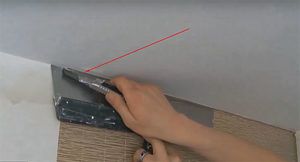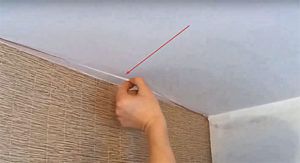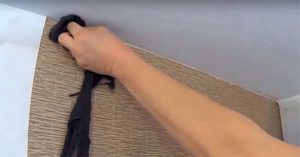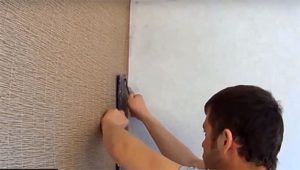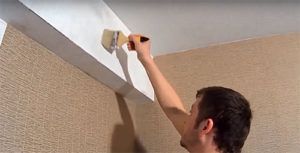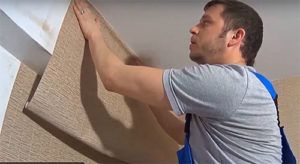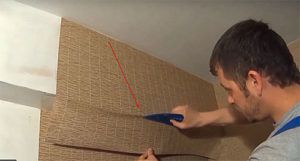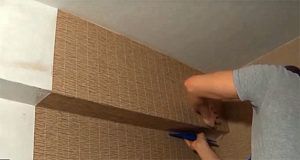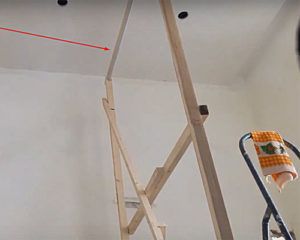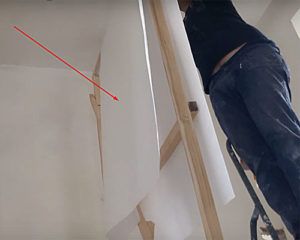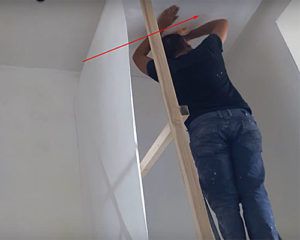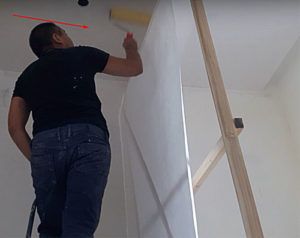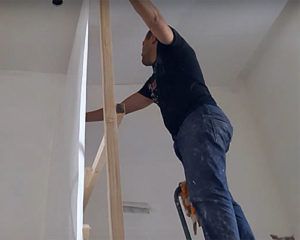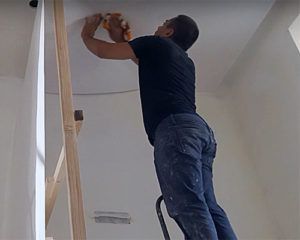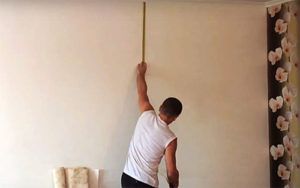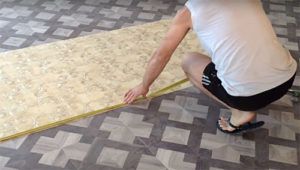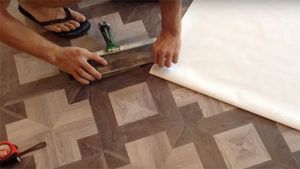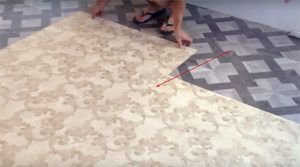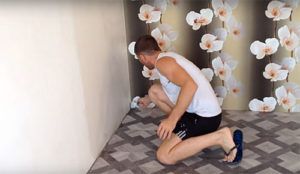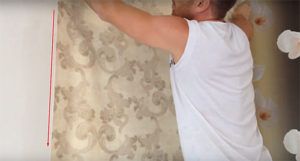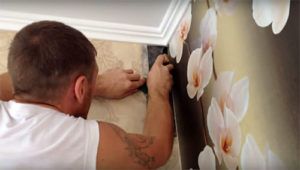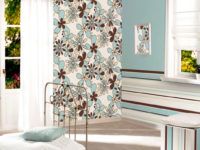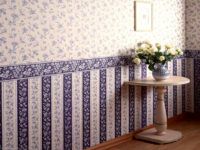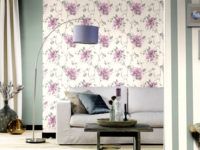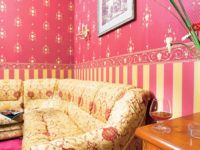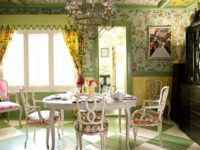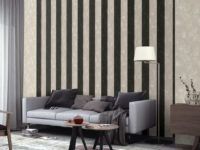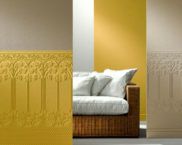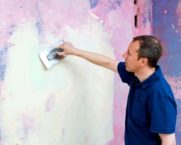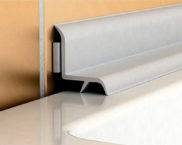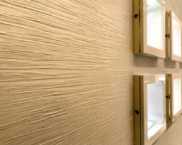When it is impossible, but very necessary: how to glue the wallpaper on the wallpaper
In what cases do we ask ourselves this question, how to paste wallpaper on wallpaper? There are, in fact, two options: if the old coating is held so tightly that it is impossible to remove it, or the condition of the walls is such that after removing the layer of old wallpaper, catastrophic irregularities will open. Today the editors of the online magazine homemaster.techinfolux.com/en/ have prepared useful information for you on how to cope with this difficult task. What materials are suitable for pasting and which are not, how to properly handle corners and glue the ceiling, what you need to know about preparing the surface for work - all this is in our article.

Wallpaper in an apartment is the most common type of decoration. They should be updated approximately every five to seven years.
The content of the article
- 1 Advantages and disadvantages of gluing wallpaper on wallpaper
- 2 Options for gluing wallpaper on different types of coatings
- 3 How to prepare walls for pasting wallpaper on the old layer
- 4 How to glue wallpaper correctly: advice from experts
- 5 When wallpapering is not an option
- 6 Sticking two types of wallpaper: photo gallery
- 7 How to glue wallpaper to wallpaper: video
- 8 And yet: how to glue the wallpaper correctly? Video course for beginners
Advantages and disadvantages of gluing wallpaper on wallpaper
So, what can be considered an incentive for such a non-standard solution as re-pasting an existing wallpaper layer? There are few versions:
- you have little time to thoroughly clean the walls from the old layer;
- you do not have the skills and experience of leveling walls, and for this reason you do not dare to completely remove the old coating;
- you think that the next layer of wallpaper will make your walls warmer;
- you think you will save money by not doing a major surface cleanup.
We will deal with these theses in more detail. So how long does it take to remove the old coat? If these are ordinary paper or non-woven products - maximum half an hour.
Harder with liquid wallpaper - they need to be soaked and scraped off with a spatula. But this work will not take much time either. It is possible that in the process of cleaning the walls you will encounter an unpleasant reality: low-quality plaster will fall off along with the sheet of wallpaper. This is really sad.
This is not such an impossible task: there are many detailed master classes on the net that will help you quickly master this type of work. Here's about some wall insulation, then this thesis has some meaning. Indeed, multi-layer protection will help keep you warm. But if you really have a problem with cold walls, you need to solve it differently. The room should be insulated outsiderather than from the inside.

Modern manufacturers offer a huge variety of insulation materials that are easy to install on the facade.
You have an apartment in a multi-storey building, and you won't be able to insulate the outside? Do it from the inside, but definitely not wallpaper... This is the worst insulation option. And the last one is the question of economy. The success of the event depends on many factors: how firmly the old layer "sits", how it reacts to wetting with glue and whether it can withstand the weight of the second layer. A small flaw - and your new expensive panels will go in ugly bubbles, or even completely slide down in folds. Then there will be no question of saving: get ready to buy everything again.
Options for gluing wallpaper on different types of coatings
If it was not possible to convince you to abandon the gluing of the second layer, we will consider in what cases it is possible and in which it is absolutely impossible to do this. Not every old coating can serve as the basis for a new one. It depends on the material that was used in the original finish.
Is it possible to glue wallpaper on non-woven wallpaper
Non-woven fabric is a thin cellulosic non-woven fabric. It is a highly elastic material and can be used if plaster on your walls is far from perfect. The non-woven coating is steam and air permeable and can be easily removed if necessary.
How to glue new ones, for example, vinyl wallpapers, for non-woven backing? To do this, you must carefully paint over the old PVA layer with glue or liquid glass. What it does: a moisture-proof film forms on the surface of the old layer. It will not let the glue layer pass through itself and will not let the old coating get wet and fall behind the wall.

For greater confidence in a high-quality result, add a little PVA or bustilate to the glue, and the new layer will securely fix on the old one.
Note! This method of gluing wallpaper will lead to the fact that the coating will not allow air to pass through. The repeated layer of wallpaper must not be painted, it will bubble.
If the old layer is liquid wallpaper
Paper or vinyl sheets cannot be glued to liquid cellulose. The fact is that the surface of this type of decorative coating is very embossed, and no even canvas will stick to it, and ordinary glue will soak the old layer, and it will fall off. Here you can try only the same liquid formulations... During the preparation process, paint over the old layer with white water-based paint.

The old layer of liquid decorative coating will have to be removed without fail if there are stains from grease or oil. If you leave everything as it is, the fat will show through the new layer already a couple of days after the repair.
How to glue wallpaper on wallpaper for painting
But to this question, how to glue wallpaper on wallpaper for painting, the unequivocal answer is no way. And there are two reasons for this:
- the embossed surface of the wallpaper for painting will not allow the new layer to adhere tightly to the wall;
- paintable coating has a vinyl outer layer that does not absorb moisture. This means that the glue will roll and not penetrate the surface, and the new layer will simply not stick.
Is it possible to glue photomurals on wallpaper
A full-wall photo is a fashionable touch in interior design. How beautiful to glue wallpaper:
- the base for them should be perfectly flat, especially if the drawing is applied on thin paper;
- there should be no bubbles or cracks on the base;
- the old layer of wallpaper should not contain water-soluble paint that can bleed through the new coating;
- there should be no relief on the old layer, it will ruin the drawing.
Otherwise, the pasting method is the same as described above. That is, you should make sure that the old layers do not go in bubbles, cover them moisture resistant paint or PVA glue.
Related article:
Wall murals that expand the space. In a separate publication, we will tell you how to choose and use the right wallpaper with volumetric patterns for small rooms.
How to prepare walls for pasting wallpaper on the old layer
The task of the preparatory work is to ensure high-quality fixation of the new decorative coating... In addition, during the preparation process, it is necessary to eliminate the fungus on the walls, if any, and the breeding sites of insects. It is problematic to do this without removing the old layer. Can you imagine how many bugs, ants and cockroaches can form colonies in areas of loose wallpaper? If there is any hint that the previous layer has moved away from the wall, ruthlessly remove it.
After processing it is necessary polish the processing points fine sandpaper. In places where mold spots have appeared, you need to carry out the same procedure, additionally treating the wall with a composition from the fungus.
Advice! For priming, use a universal primer, it will ensure high-quality adhesion of the wallpaper».
Before you finish processing, do one small experiment: in one place, spread the glue with which you will glue a new layer and leave it to dry, if the base does not bubble and falls off, you can start working.
Why do you need a primer on the walls before gluing wallpaper
A primer is essential for better adhesion to the new layer. In hardware stores, you can find a large selection of primers for different purposes.
The primer is applied only to a clean surface, therefore old coatings should be swept or wiped with a rag. Specialized primer in case of gluing the second layer wallpaper can be replaced with a layer of PVA glue. This will not affect the quality of adhesion.
How to glue wallpaper correctly: advice from experts
So, you have decided to paste the wallpaper. What is the cost of the work if you hire specialists? From 100 rubles - this is the price per square meter. You can glue the wallpaper yourself. This is not as difficult as it seems at first glance.
How to make glue yourself to glue the wallpaper: recipe and video
For each type of wallpaper there is a specialized glue. For simple paper glue marked "light" or homemade paste is suitable. For coatings on non-woven or a vinyl base, formulations containing PVA are used. The fabric is glued to Bustilat or wallpaper. Fashionable cork coverings are easy to attach with regular adhesive.

Homemade glue can be made on the basis of 1st grade bread flour. The procedure is very simple: pour 2 glasses of flour with a couple of glasses of cold water and stir thoroughly so that there are no lumps. A mixer can be used. Pour the resulting solution in a thin stream into a liter of boiling water. This should be done directly on the stove, constantly stirring the boiling water during the infusion. The glue will thicken immediately. It is necessary to remove the composition from the heat and cool. Such glue is not stored for a long time, it must be used immediately after cooling. In exactly the same way, you can make a paste of potato starch, only you need 1 cup of starch.
Video material for preparing starch glue:
How to properly glue wallpaper in the corners of the room
How to glue the wallpaper on the ceiling yourself without assistance
The main problem in pasting the ceiling is that the canvases tend to fall down under their own weight. They should be glued in stages.
Advice! If you do not know how to choose wallpaper for the ceiling, pay attention to the following nuances: embossed canvases will hide small irregularities in the plaster, light colors will visually raise the ceiling, and products made of natural materials are resistant to fading.
How to glue wide panels correctly
Wide panels with a directional pattern are not easy to stick on alone. We offer you a small master class on how to glue meter-long wallpaper on a non-woven base:
When wallpapering is not an option
If the old layer has an unstable color, do not risk covering it with a new canvas. If you find that the previous layer of wallpaper is not one, the tenants have made a real cake on the walls before you, break this vicious circle. Remove all covers, otherwise they will become or have already become a breeding ground for bugs and cockroaches. Any bubbles on the previous coating are also a signal that you have to thoroughly clean everything.
Sticking two types of wallpaper: photo gallery
There are situations when partial repairs can be carried out. For example, there is a need to repair only one wall that has smudges or stains. In this case, it is permissible combine canvases with a different pattern. Basic rules to know:
- select coatings of the same thickness and material;
- do not use more than two ornaments on one wall;
- neutral shades can be combined with bright colors;
- make sure the surface to be glued is free from defects.
Using successful combinations, you can literally make cosmetic repairs and wallpaper in the room in just one day. The price of such work is a penny, and so it is quite possible to postpone major repairs for another couple of years. See how it might look:
Related article:
Combined wallpaper in the hall. In the publication you will find the criteria for the correct choice of canvases, the rules for combining colors, the main nuances and rules for gluing when combining, expert advice.
How to glue wallpaper to wallpaper: video
There is one good idea how to simultaneously insulate and paste over the wall without removing the old layer of wallpaper. A new material has appeared on the market that can be used for internal insulation of premises. Check out how to mount it in this little plot:
Related article:
Wallpaper for walls: photo catalog interesting solutions for the living room, bedroom, children's room, kitchen and corridor. The basic rules for the selection of paintings and recommendations of designers - read our review.
And yet: how to glue the wallpaper correctly? Video course for beginners
Remember: re-wallpapering is an extreme option, which is justified only in case of a hopeless situation. If you are making repairs for yourself and want to get a high-quality and beautiful interior, do everything according to the rules. Peel off the old coat, level the walls and apply the decorative finish using quality adhesive. This is the only way you will get a guarantee that your walls will look decent for many years.
For those who want to familiarize themselves or refresh in memory the whole sequence of actions, the video material:
If you have any additions or comments on the topic, write in the comments!













